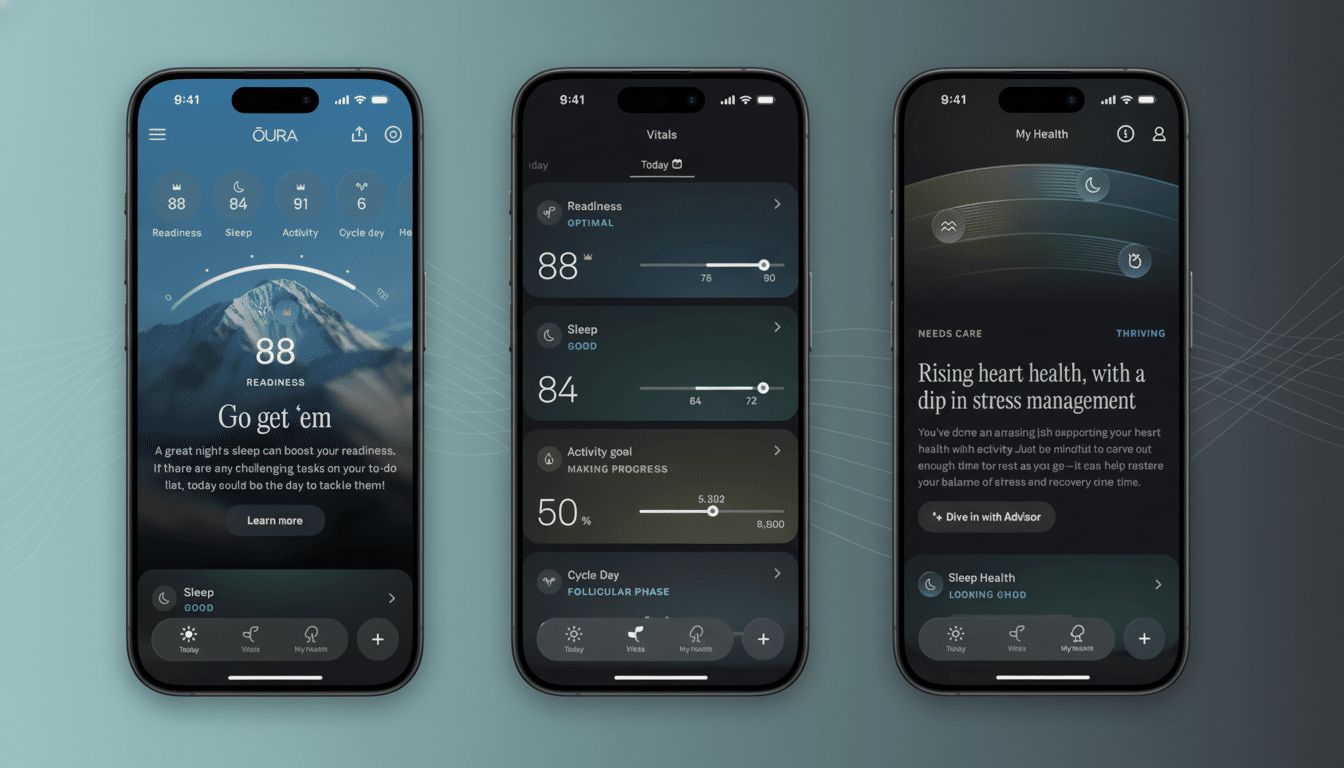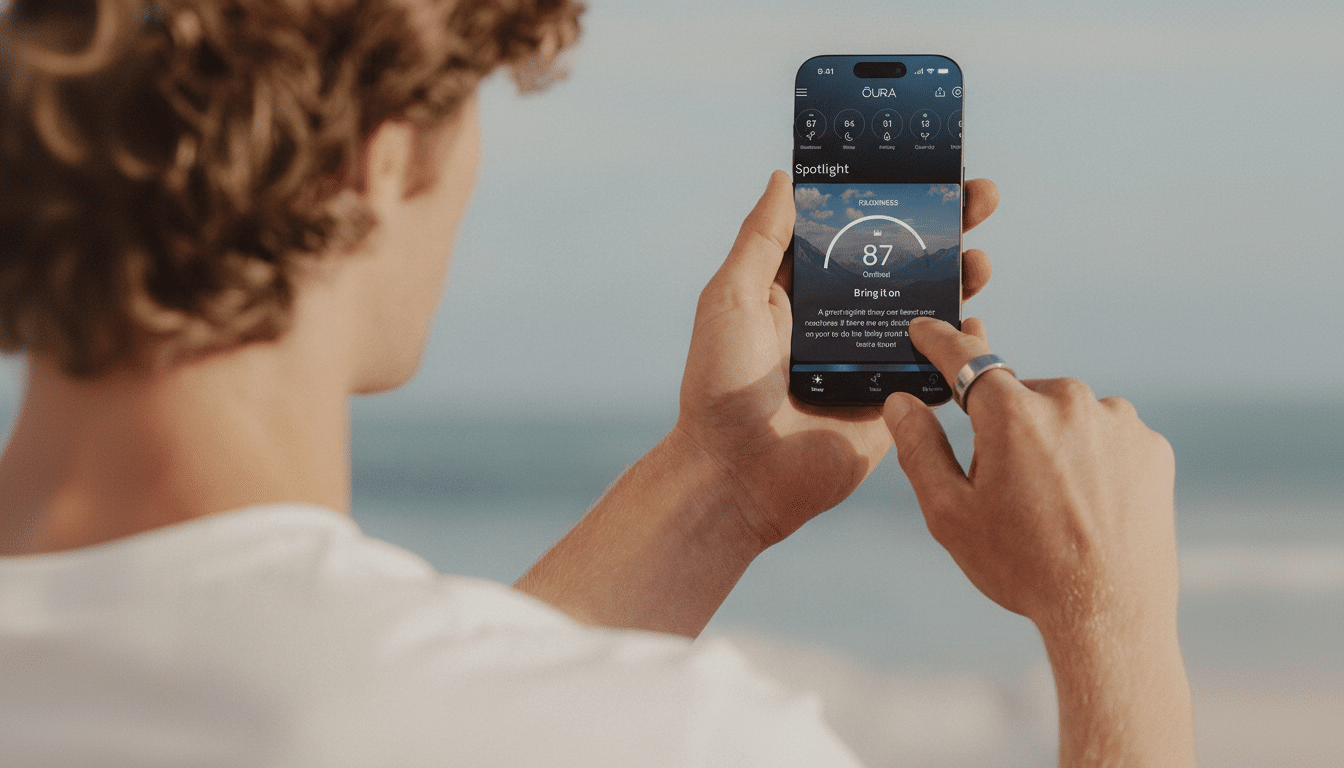Oura is rolling out new features designed to tackle not just momentary stress spikes but the slow burn that accumulates over weeks and months. It consists of a new Cumulative Stress metric, a reimagined Stress Management view in the app, expanded Cycle Insights for menstrual health, and an early research effort assessing blood pressure risk with steady HR signals. Although it builds on Oura’s work on stress from last year, the push reflects a growing trend in wearables: across the board, users and researchers are finding little use for daily snapshots of health. Instead, people want the device to enable actual prevention by surfacing emerging patterns, nudging behavior change, and offering insights that are useful beyond the day.
What Cumulative Stress Actually Measures
Wearables cannot “measure” stress but can infer it from resting heart rate, heart rate variability, skin temperature trends, sleep stages, and activity load. Oura’s Cumulative Stress synthesizes these signals with validated self-report tools, such as the Copenhagen Burnout Inventory, to shed light on how persistent strain is impacting your ability to recover over time. This is radically different from moment-to-moment stress tagging. Acute stress could be a short-lived HRV dip during an intense meeting; cumulative stress is the compounding effect of poor sleep, back-to-back workouts, travel, and life stresses that never quite allow your baseline to recover — a pattern linked to burnout risk and persistently low energy.

“Time is going to tell” about long-term effects, although users “should see context around whether they’re coming back after hard days or they’re slowly moving into an extended overreached state,” said Micah Zuhl, a co-author on the study and an assistant professor in the university’s Department of Health and Kinesiology.
For athletes and other dedicated exercisers, that surge is an early signal to pull back on training, get serious about sleep, or reconsider schedules before performance or mood lags.
A Personalized Stress Management View in the App
The app overhaul adds a Stress Management view that aggregates stress-related signals in one place. Rather than bouncing back and forth between cards and daily scores, users can track a more straightforward story of short-term response versus long-term load, allowing them to better correlate habits with results.
That approach mirrors an emerging understanding in sports science and occupational health: Long-term stress isn’t all about one metric. Putting recovery, strain, and sleep into one lane lowers the cognitive load and helps people make one, or maybe two, focused changes that actually stick.
Cycle Insights Turns From Weeks To A Year
Oura is scaling Cycle Insights from a roughly monthlong outlook to yearlong predictions, and reducing the time it takes for its first predictions to about two months of wear. That quicker takeoff is good news for newcomers, but early readings should be considered tentative until more data comes in.

Wearable cycle tracking typically uses nightly temperature trends and historical cycle patterns. Although such tools can be useful in predicting phases and planning training or travel, they are not medical diagnostics. Clinicians stress using them as complementary data, especially for those with irregular cycles or underlying disorders.
Early Steps Toward Blood Pressure Risk Guidance
Because a smart ring can’t take a traditional cuff measurement, Oura is starting with a research initiative called Blood Pressure Profile. The concept: combine wearable-derived trends with questionnaire data on lifestyle and family history to estimate whether a user’s blood pressure risk may be elevated and worth checking with a cuff. The study, open to participants through Oura Labs and overseen by an Institutional Review Board, aims to validate whether these modeled estimates can reliably nudge users toward timely screening. It’s an incremental approach, but the stakes are high: the World Health Organization estimates about 1.28 billion adults live with hypertension, and many don’t know it. Consumer tools that prompt earlier awareness could help, provided the line between wellness guidance and medical diagnosis remains clear. Expect the company to position Blood Pressure Profile as directional insight, not a clinical reading, and to encourage confirmatory measurements with a validated home monitor.
Why Longitudinal Stress Tracking Matters
Short-term stress detection is useful, but the risks linked to chronic stress — elevated resting heart rate, suppressed HRV, disrupted sleep, and higher cardiometabolic risk — emerge over time. The American Psychological Association has reported persistently high levels of chronic stress in recent years, while cardiovascular organizations warn that prolonged strain can worsen blood pressure control.
By putting a spotlight on the entire cumulative load, Oura joins a group of wearables that focus on long-range health signals. It is similar to the technique used in endurance sports, where the training load and recovery equilibrium are monitored to prevent excessive exercising. This same concept applies to everyday users: responsibly monitor effort and recovery to preserve focus, emotions, and long-term health.
What to watch next
The Cumulative Stress feature and Stress Management view will be available to users soon, as will the expanded Cycle Insights and the app-wide refresh. The blood pressure effort is still being investigated and tested; Oura Labs invitations have been sent to qualifying participants. If well implemented, these features might make the ring much more than a nightly sleep specialist. A clearer picture of how life’s demands are distributed, paired with gentle guidance, can fine-tune your behavior so you feel better, perform better, and avoid allowing stress to dominate your life.

